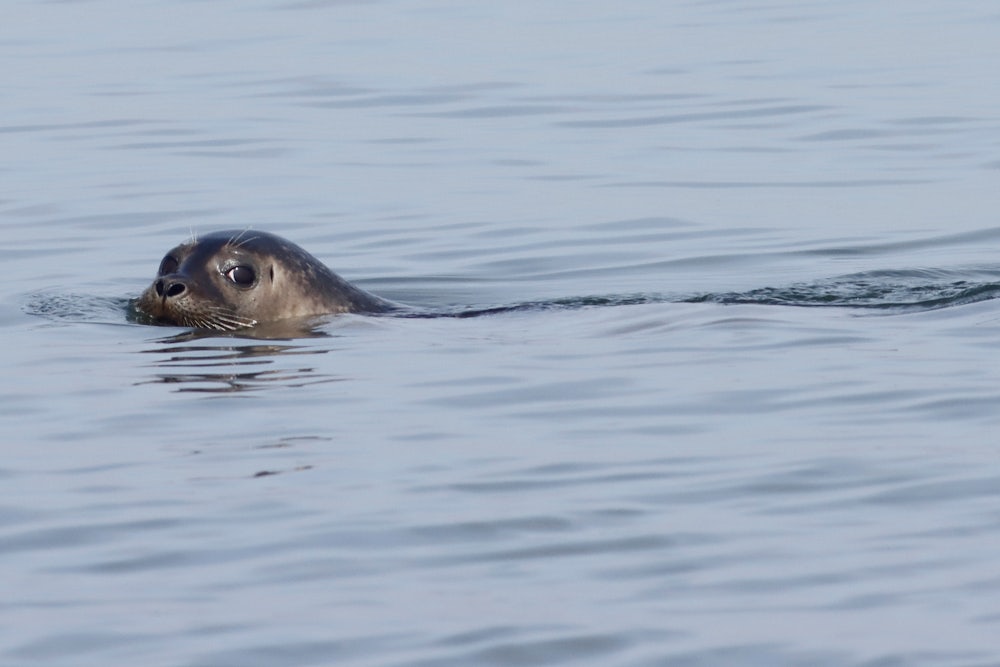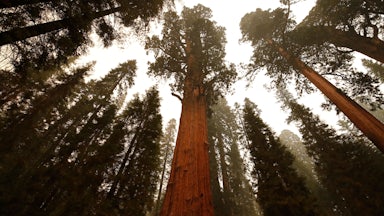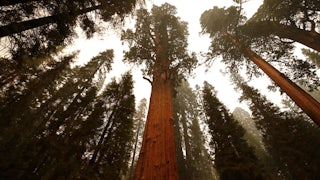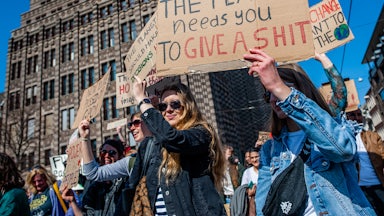It’s no longer unusual to see people fishing in New York City, whether in the rivers or the harbor. You can catch and eat striped bass, bluefish, flounder, herring, mackerel. Attracted by the abundance of fish, seals and dolphins frolic in New York Harbor, as well, along with the occasional shark. Humpback whales—absent from the harbor for at least a century—are now seen often enough to sustain whale-watching expeditions. At least four kinds of endangered and threatened sea turtles are at home in the city’s harbor and Long Island Sound. An endangered shorebird, the piping plover, began nesting here in 2016 after a 30-year hiatus. Giant oysters are coming back after a century.
This is one of the most stunning recoveries in history, and a lot of it comes down to the Clean Water Act. Now, depending on what the Supreme Court decides in a case this term, some of this progress could be reversed.
In the nineteenth century, with the rapid growth in the city’s human population, New York Harbor waters, once so bountiful that oysters were sold and consumed as cheap street food, were assaulted by a devastating volume of raw human sewage. The city closed the oyster beds in the 1920s due to the danger of typhoid. Unregulated industrialization in the first half of the twentieth century made the water even more uninhabitable, drenching it with toxins.
One of the main reasons for New York City’s aquatic comeback is strong government legislation—in particular, the 1972 rewriting of a piece of 1948 legislation now known as the Clean Water Act. The 1972 expansion was a key demand of the environmental movement in its earliest years, and since its enactment, New York City’s saltwater ecosystems have been gradually recovering. Without the manmade chemicals known as PCBs, municipal waste, or Agent Orange, marine life has been coming back. In 2019 a report found that New York Harbor was the cleanest it had been in 110 years. The Clean Water Act also provides ways to block fossil fuel pipelines, giving activists and localities a way to challenge and defeat many in recent years. One proposed project, the Williams Pipeline, would have devastated New York’s reviving ecosystems had activists not pushed the government to block it on Clean Water Act grounds in 2020.
All this magnificent life is now in jeopardy. Last week, the Supreme Court heard oral arguments in a case challenging the very idea of protected wetlands.
The case that could Make New York Harbor Gross Again is a galling example of everything that is wrong with our political system. In 2004, Michael and Chantell Sackett made quite a stupid purchase, buying half an acre of soggy land on the shores of a lovely Idaho lake, a protected wetland. The Environmental Protection Agency under the Bush administration (hardly a Communist dictatorship or a coven of wokeness) ruled that the couple needed a permit to develop a wetland parcel and that since the Sacketts had begun building their house without attaining such a permit, they were in violation of the Clean Water Act; they were ordered to stop work on their house and pay fines to the agency. Although presumably the gorgeous natural environment in the area was the reason why the Sacketts wanted to build a house there in the first place, the couple is now willfully pursuing a legal case that could potentially ravage it.
The Sacketts are arguing to the Supreme Court that, contrary to bipartisan policy since the early 1970s, only the water itself in a wetland should be protected, not the land next to it. This would require the court to overlook the well-known (and obvious) phenomenon of runoff and the contribution of land activities to water pollution. The Sacketts are represented by the far-right Mountain States Legal Foundation, whose first president was James Watt, the millenarian anti-environmentalist who led the Department of the Interior under Ronald Reagan and launched a vigorous effort to deregulate industry and open protected public lands for development—especially to drilling and coal mining. They’re also represented by the Pacific Legal Foundation, a libertarian organization founded the year after the Clean Water Act, which has been fighting for years to uphold an extremist libertarian view of property rights, opposed to any notion of the public good. These groups have been fighting a long game, and they’ve enjoyed notable success at significant cost to life on earth, but a verdict in favor of the Sacketts would be one of the deadliest consequences yet of their long-running assault on government environmental protection.
The Clean Water Act isn’t the only reason New York Harbor looks the way it does today, of course. Other types of civic action have helped, and of course will continue whatever the Supreme Court does. A group called Riverkeeper has fought corporations responsible for polluting the Hudson River through direct action and through lawsuits. Thousands of volunteers help clear trash from the Hudson River and from the beaches in the Rockaways. Other volunteers—including schoolchildren, often as part of public school curricula on harbor ecology—help build artificial reefs to encourage the return of the oysters.
Waterways so clearly beloved by the communities that depend on them, protected by many decisions made by democratically elected governments, should not be put in grave danger on the whim of a handful of individuals elected by no one.
The Clean Water Act is a stellar example of how generative and life-giving good policy can be, as well as the power of social movements to make change that can reverberate for decades. If the Supreme Court moves to undo all that good work, then Congress, the president, local authorities, and all of us using all our civic capacities must act immediately to save aquatic life throughout the country. Though there’s still time for the court to see reason—and there are encouraging indications that even Brett Kavanaugh is skeptical of the reasoning from the Sacketts’ side—we should prepare to defend all our nation’s waterways if it doesn’t. Whatever the court decides, the Clean Water Act should be seen as a model of how citizens and governments, thinking big, can make life better for all of us—bivalve, human, or whale—for generations to come. Now is the time to build on the CWA’s progress, not to eviscerate it.










